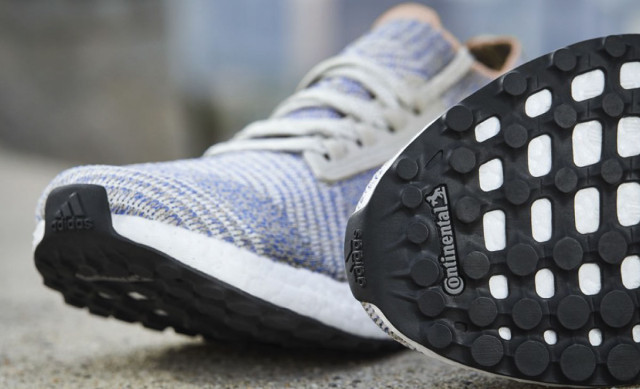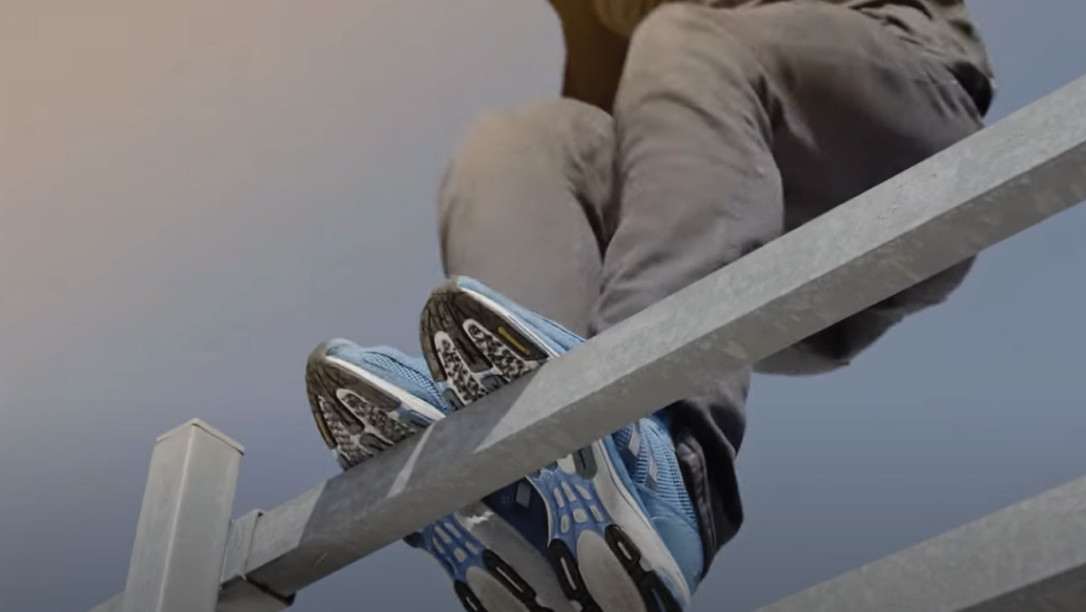It might seem the unlikeliest of partnerships yet for the last 15 years a leading sportswear manufacturer and a leading tyre manufacturer have worked together. The results have been quite staggering; millions of pairs of shoes sold, hundreds of races won and a few world records set. Plus an Olympic medal.
Look past the unlikeliness and it makes perfect sense. Adidas makes some of the very best running shoes in the world. The soles are made from rubber and need to provide the wearer with grip. Continental makes some of the best tyres in the world. They are made from rubber and provide drivers with grip (amongst other things).
This is the story so far.
A Running Shoe Designer and a Rubber Expert Meet in a Workshop
It’s early in 2007. Gerd Manz is a Senior Innovation Director at adidas. He’s searching for help, convinced adding grip to his running shoes would improve athlete performance. When he attends a workshop in Germany, he meets Fabian Dettmer, who is the Head of Mixing & Process Development at Continental.
“In the course of the workshop, we got to know the team from Continental and we got talking about the similarities between car tyres and running soles” says Gerd. “This gave rise to the idea. We stayed in touch and started experimenting, initially with a rubber compound for motorcycle tires specifically for use in the wet. But the shoe turned out to have so much grip that you could walk up walls in it – far too much for a shoe, where you also need what’s called ‘rotational freedom’ to prevent injuries”.
Fabian Dettmer adds “we were sure that we had the materials to help adidas, after all, here at Continental grip stands for short stopping distances and perfect handling, making it one of the top priorities as we develop materials for our tires. Initial samples that we produced confirmed our view that we could come up with something better than the existing soles. There was a tangible difference.“
This is how it all started. In the years that followed Gerd and Fabian would go on to develop multiple soles together for different shoes, with different purposes. But first, there were some key differences between tyres and trainers that needed sorting.
In the course of the workshop, we got to know the team from Continental and we got talking about the similarities between car tyres and running soles.


Tyres and Trainers are Different
It’s not as simple as taking Continental rubber and attaching it to the bottom of pairs of trainers. For a start, the rubber on trainers is kept in place with the use of adhesive. Getting this bonding correct is harder than it would appear and it’s not unusual for rubber soles to begin to peel on cheap trainers.

Then there’s the sizable issue of colour. Tyres come in black. That’s it, without variation bar a few ‘whitewalls’ which have become increasingly rare in recent years. Trainers are bold and bright, the soles are an important aesthetic consideration and often make full use of the colours available. Additionally, trainers may save a functional purpose but there’s no denying they’re a fashion item for many purchasers. So they need to look good.
Any colouring on the sole needs to stay there. Whereas tyres can leave marks, trainers must be non-marking, which means they must not leave any traces on the floor. Achieving this places considerable constraints on the ‘mix’ of ingredients used in the rubber.
The surfaces the rubber needs to interact with are different too. All terrain tyres might go anywhere but that doesn’t include wooden gym floors. It calls for a different set of properties, with the rubber needing to react and work with a more varied collection of surfaces, whilst providing grip under different dynamics and forces.
Testing Trainers
Nearly every tyre produced by Continental for the last 50+ years has been tested at the Contidrom. A banked car racing track is no use for testing trainers though, so a different approach to research and development was needed.
Fabian Dettmer explains; “to see where the grip comes from we have to look at the macroscopic level. How much energy is lost during traction? How much energy is converted to heat during this point? In comparative tests we were able to determine that with our compounds we can achieve a 15% - 30% improvement in grip.”
The standard running shoe takes around 18 months to move from the initial idea and into full production. For the first collaboration between adidas and Continental, this was extended to 3 years, recognising the learning curve needed. This made the time in testing more comparable to that of a tyre, which will typically take at least 3 years to develop. Although a period of 5 years is not uncommon.
One of the first real-world tests of the collaboration was on New Year's Eve, in 2009. Former marathon world record holder, Haile Gebselassie had a prototype pair for testing. It had been raining in Trier and part of the course was over cobbled streets, so Haile decided to wear the prototypes in the race itself. It was a surprise to both adidas and Continental but turned out ok. He won the race by some considerable distance.

A Record Setting Performance
The ultimate test for any running show is against the clock. Arguably, the biggest battles here are fought over 100 metres or 42.195 kilometres. A marathon race takes around 35,000 steps and each one of them is a separate acceleration process, no matter how smooth the running style of the runner. So the grip really counts, propelling the runner forward.
The Continental soles boost grip in the adidas trainers by up to 30%. That’s a big difference and is significant as it’s the only mechanical alteration available to a runner. Whereas a racing car driver has some of the world's most advanced technology in the vehicle, a runner only has their trainers. Everything else comes down to training and conditioning.
Patrick Makau undoubtedly trains hard. That much is evident from the 2011 Berlin Marathon, when he tore 21 seconds off the previous world record as he sprinted across the finish line. He was wearing a pair of trainers from adidas & Continental. As was Wilson Kipsang in 2013 when he set an even faster record time, completing the same course in an amazing 2:03:23.
Over the years, there have been some notable track records and world records set on Continental soles. These include:
- In the 2013 Hanover Marathon, Lusapho April from South Africa ran in the new adizero adios boost shoes and set a course record in a time of 2:08:32.
- Olena Burkovska from Ukraine in adizero adios boost shoes broke the women’s course record in the 2013 Hanover Marathon in a time of 2:27:07.
- Also in adizero adios boost shoes, Kenya’s Dennis Kimetto set a new course record in the 2013 Tokyo Marathon, coming home in 2:06:50.
- Wilson Kipsang of Kenya won the 2012 London Marathon in adizero adios 2 shoes.
- Kenya’s Mary Keitany won the women’s 2012 event in London in a time of 2:18:37, also on Continental soles.
- In 2011 Patrick Makau from Kenya crossed the line in 02:03:38 at the 38th Berlin Marathon, notching up the first marathon world record on Continental Traction Compound soles.
- In the 40th Berlin Marathon in 2013, Wilson Kipsang from Kenya beat the previous world record held by his compatriot Patrick Makau by 15 seconds, completing the course in 2:03:23 and setting the second consecutive marathon world record on Continental soles.
ARE YOU READY FOR MAXIMUM GRIP?

Running in all Directions
Since the first foray into running shoes, Continental and adidas have expanded the partnership by introducing shoes in other areas, such as outdoor and trekking. Today, there are more than 80 adidas running and trekking shoes fitted with Continental soles. Sales top over 3 million annually and they are worn by some of the very best individuals in each speciality. People like Tim ‘Livewire’ Shieff, the British freerunning world champion. All up, in excess of 60 million pairs of shoes have been sold with Continental soles.
It really is a ‘gripping’ partnership. Unlikely? Maybe. But it certainly works and looks set to continue for some time yet.


